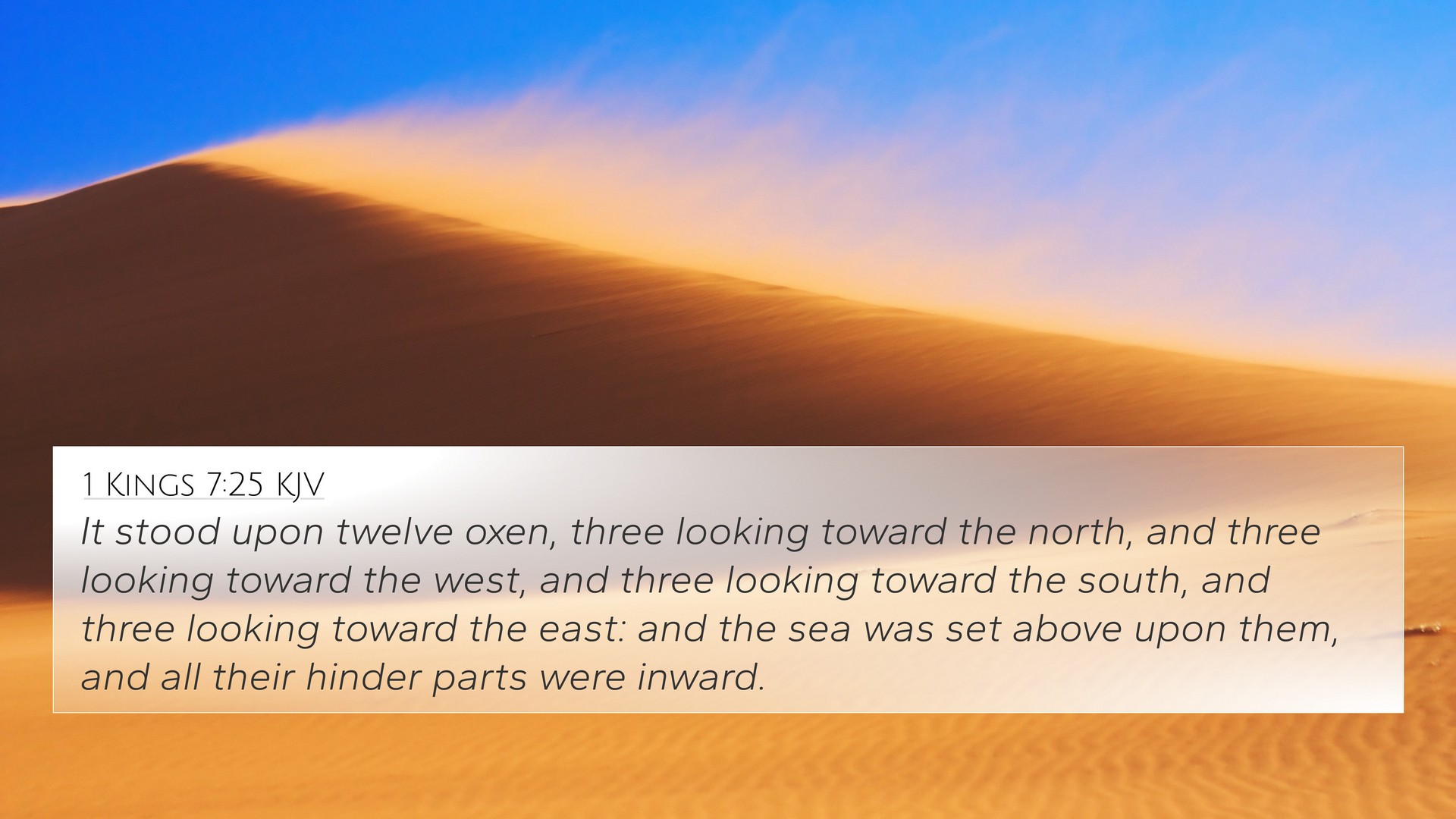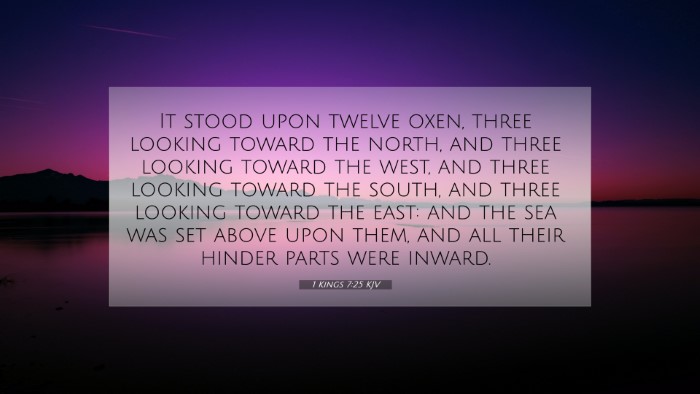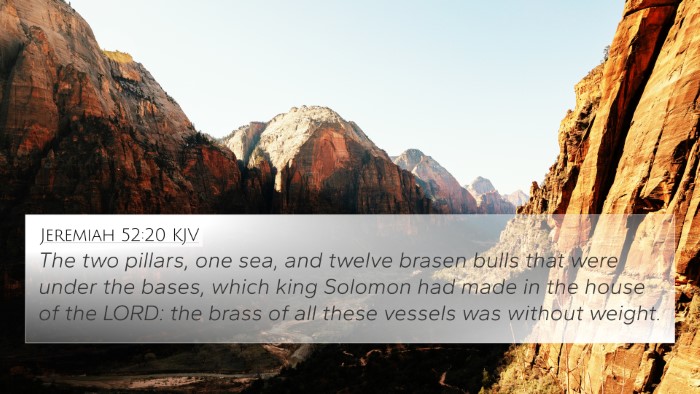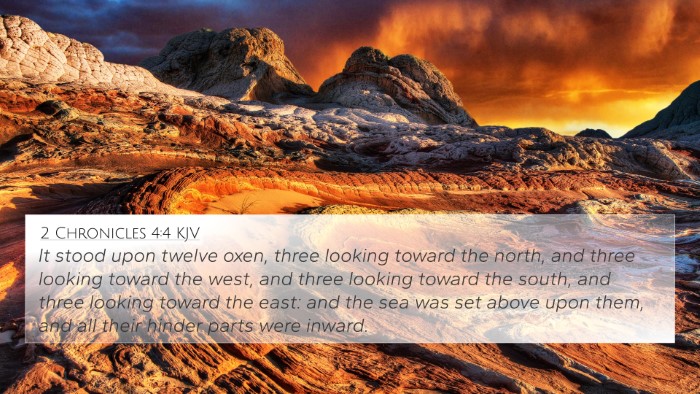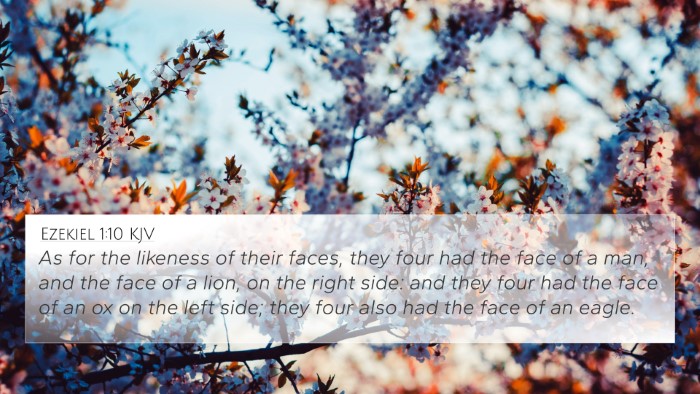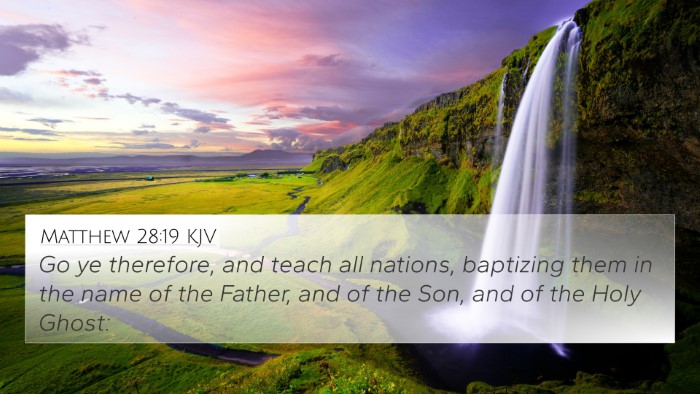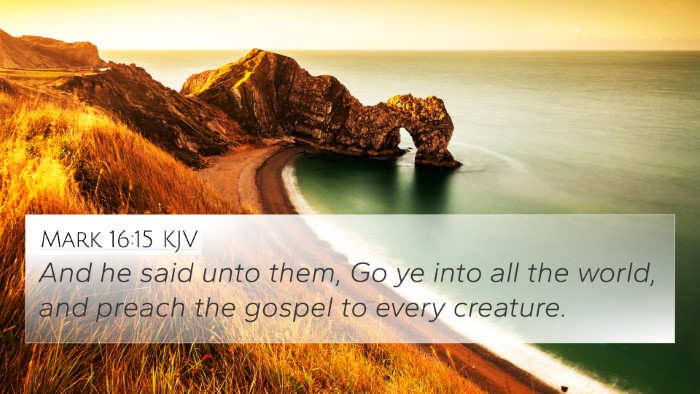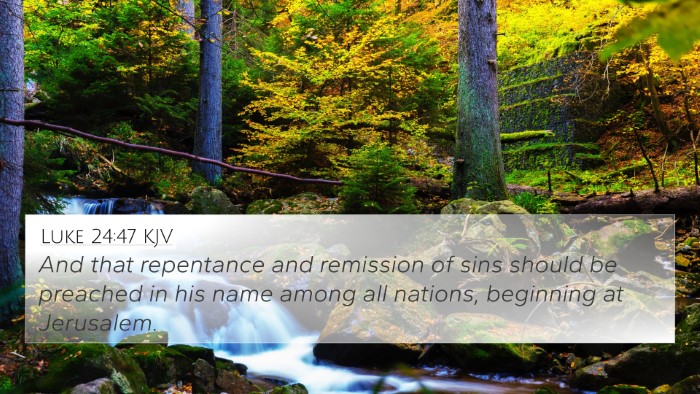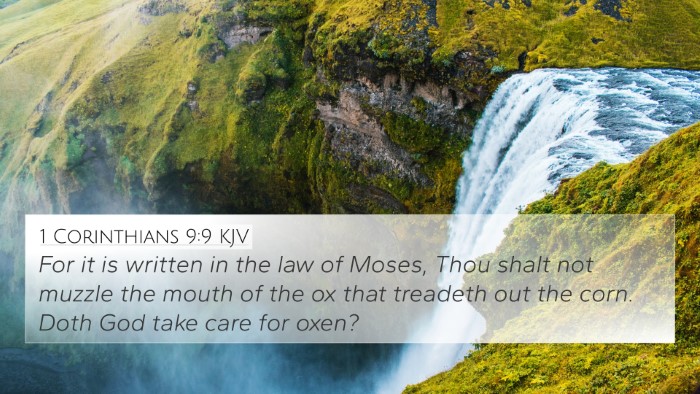Understanding 1 Kings 7:25
1 Kings 7:25 states, "It stood upon twelve oxen, three looking toward the north, three looking toward the west, three looking toward the south, and three looking toward the east: and the sea was set above upon them, and all their hinder parts were inward." This verse describes the elaborate structure and design of the molten sea created by King Solomon for the Temple. To grasp the depth of this Scripture, we will turn to various public domain commentaries to gain insight.
Commentary Insights
Matthew Henry's Commentary
Matthew Henry emphasizes the significance of the molten sea as a symbol of the vastness of God’s grace and the abundance available to His people. He notes the twelve oxen represent the twelve tribes of Israel, unified in service to God. The positioning of the oxen points to God's omnipresence and care for His creation, as their heads face in all directions. This not only illustrates stability but also the sufficiency of the sea for ceremonial purifications, reflecting the need for cleansing in worship.
Albert Barnes' Commentary
Albert Barnes provides a detailed explanation of the construction and purpose of the molten sea. He explains that it was a massive basin made for the priests to wash, representing the cleansing that comes from God. The twelve oxen underneath symbolize the strength and support of the Israelite community in their worship obligations. Barnes also indicates that the design illustrates the idea that God's presence and provision are ever-watchful and comprehensive, giving a visual representation of the importance of purity in the life of the faithful.
Adam Clarke's Commentary
Adam Clarke elaborates on the dimensions and significance of the molten sea. He remarks on its depth and width, partitioned by the twelve oxen that support it, emphasizing the communal aspect of worship. Clarke also highlights how this imagery connects to themes of purification and renewal, suggesting that just as the priests required physical cleansing, humanity needs spiritual cleansing through Christ. The imagery of the sea filled with water serves as a reminder of the living water offered by Jesus, drawing parallels between the old covenant and the new covenant.
Bible Verse Cross-References
- Exodus 30:18-21 - Discusses the bronze basin for washing at the Tabernacle, connecting to purity in worship.
- 2 Chronicles 4:2 - Details on the construction of the great bronze basin, similar to 1 Kings 7:25.
- Psalm 77:19 - The imagery of God’s pathways through the sea reflects God’s sovereignty and care for His people.
- Ezekiel 47:1-12 - The concept of living water from the temple provides a prophetic connection to purification and spiritual life.
- John 7:38 - Jesus speaks of living water, connecting the Old Testament symbolism to New Testament fulfillment.
- Hebrews 10:22 - Encourages believers to draw near with a true heart, reflecting the necessity of spiritual cleansing.
- Isaiah 12:3 - "With joy you will draw water from the wells of salvation," echoing the motifs of water and cleansing.
Thematic Connections
The verse serves to establish themes of holiness, purification, and God's provision. In the context of worship, it symbolizes the necessity of being cleansed before approaching God. Through cross-referencing other Bible verses, we can see how these themes are interwoven throughout Scripture.
Understanding cross-references can greatly enhance the study of this verse. For readers seeking a deeper understanding, the following suggestions are helpful:
- Use a Bible concordance to locate related verses, enhancing the study of 1 Kings 7:25.
- Engage in Bible cross-reference guides to trace thematic connections between various scriptures.
- Employ cross-reference Bible study techniques to explore how Old Testament practices inform New Testament teachings.
- Identify connections between Old and New Testament to understand the progression of God's message.
Conclusion
The imagery presented in 1 Kings 7:25 extends far beyond a simple description of a temple fixture. It encapsulates core themes of purification, community, and divine provision for the worshippers of God. By exploring the connections to other biblical passages, we can appreciate the continuity of God’s plan for His people—from the Old Testament sacrificial system to the New Testament revelation of grace through Christ. Such comparative Bible verse analysis enriches our understanding of the Scriptures as a unified revelation of God's character and purposes.
